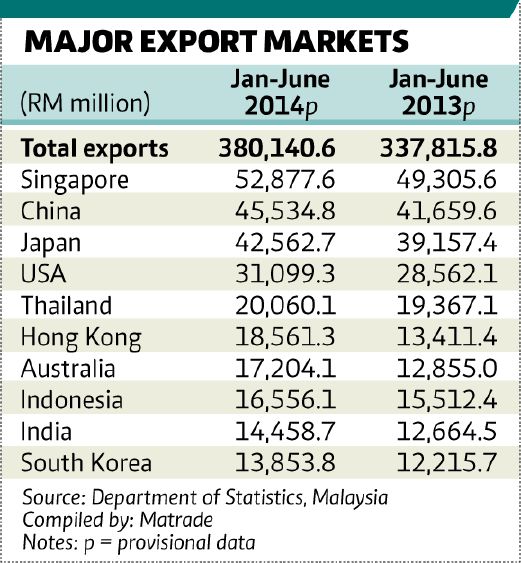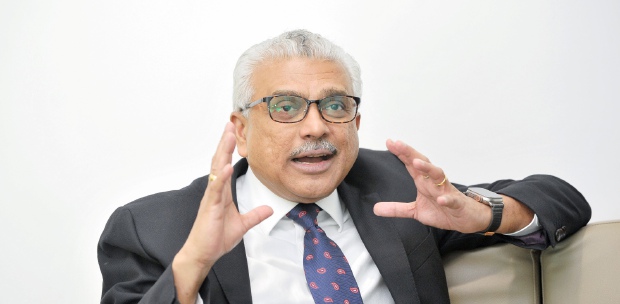MALAYSIA’S trade staged a strong performance in the first half of this year, backed by a double-digit growth in exports.
It is likely to lead to a robust economic performance in the second quarter of the year following on the heels of the 6.2 per cent growth in the first quarter, said economists.
According to the International Trade and Industry Ministry (Miti), total trade expanded 9.9 per cent in the first six months of the year while trade surplus surged by 81.8 per cent.
Exports registered double-digit growth of 12.5 per cent, compared to a drop of four per cent in the first half year 2013.
“Growth in exports was broad-based with all sectors and major markets recording increases,” it added.
Electrical and electronic goods (E&E) led the increases. Imports expanded by 7.1 per cent with increases in capital, intermediate and consumption goods.
Malaysia also recorded significant growth in its trade with all its major markets, including Asean, China, the Europe, the United States and Japan.
“Trade with the free trade agreement partner countries increased by 8.4 per cent to RM450.72 billion.”
In terms of products, E&E products headed the list, recording a 12.8 per cent growth, mostly electronic integrated circuits.
Mining goods also rose 16.4 per cent, contributed by higher exports of liquefied natural gas and crude petroleum.
Agricultural goods exports also increased due to higher exports of palm oil, contributed mainly by higher prices.
For June, however, exports grew by 8.5 per cent, which came in below market expectations. Imports rose by 9.2 per cent with a trade surplus of RM3.97 billion.
Michael Wan of Credit Suisse said the smaller than expected trade surplus in June was driven by weaker exports and slightly more resilient import growth.
“The weakness in Malaysia’s exports growth was driven to some extent by oil and gas exports, which can be quite volatile from month to month.
“Another important drag came from electronics exports, which moderated to 5.5 per cent from a 12.4 per cent gain the previous month.”
However, he found the imports more resilient, recording a 9.2 per cent growth year-on-year, noting that there are some tentative signs that capital goods imports are picking up.
While the industrial production index results for June will only be out next week, Credit Suisse expects the second quarter to be strong around six per cent, and for the economy to remain robust this year.
OCBC Bank economist Wellian Wiranto said exports in June proved to be a disappointment after surprising on the upside over the past months.
Exports at RM20.4 billion is the lowest print in four months, he said.
In terms of destination, exports to China also proved to come short of recent trajectory at below RM6.5 billion, compared with nearly RM8 billion of the past two months.
Imports in the first half rose by 7.1 per cent underpinned by growth in the intermediate goods, capital goods as well as consumption goods.
Miti said for the second quarter, total exports expanded by 14.2 per cent from the same period a year ago, while imports increased by 8.6 per cent with total trade expanding by 11.5 per cent.





